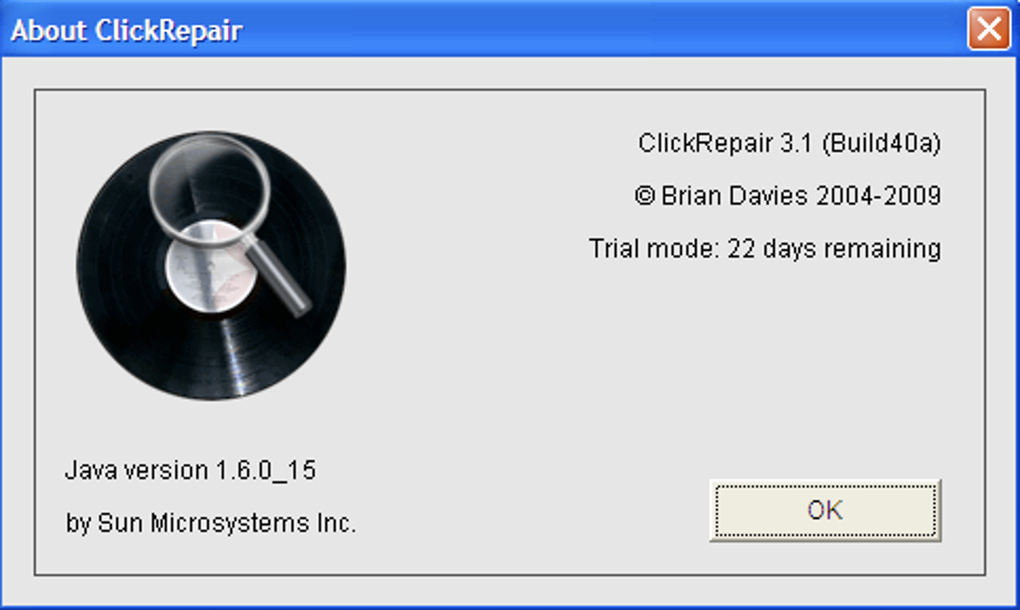

Then, using the settings from your preview testing, use the Click Removal effect on selected regions of audio or on the whole project. Preview the effect with these different settings to get the best results. For broader clicks, move the "Spike Width" slider further to right. Softer clicks may require you to move the threshold slider further to left (but moving it too far to left may create a "broken up" effect with too much audio removed). Move the "Threshold" slider to adjust how sensitive the click detection is, and the "Spike Width" slider to adjust the length of spiked audio to be considered as a click. Zooming right in and selecting only an individual spike may not work well - extend the selection a little either side of the immediate click or group of clicks to give the algorithm more idea of the undamaged audio it can use. You can select part of a track by clicking in the track and dragging to left or right with your mouse, or by holding down Shift and the left or right arrow keys. If there are a lot of clicks it is possible they may be removed more effectively by selecting individual clicks or groups of clicks rather than the whole track. Alternatively, you can select all the audio in the project by using Select > All or its shortcut Ctrl + A ( ⌘ + A on a Mac). You can select all of a track by clicking on its Track Control Panel. To use Audacity's Click Removal first select the audio from which you want clicks repaired.

Silence Audio The silenced sections must be short enough so as to not be audible.For somewhat longer regions of audio, try:.For hard to spot clicks you may want to try Click removal using the Spectrogram view.Audacity's Repair effect can repair a short length of up to 128 samples by interpolating from the neighboring samples.These methods are only really useful if you have a relatively small number of clicks and pops to deal with otherwise, these approaches will be too labor-intensive and time-consuming: The primary tool in Audacity for dealing with clicks and pops is the Click Removal effect.Ĭlicks which do not get removed with Click Removal can be treated individually with other methods. First, without zooming in too far, visually inspect your recording for clicks - they will show up as abnormally tall (sticking up or down), very narrow (one or two pixels wide) vertical lines protruding from the waveform.
#Clickrepair free manual
The French Manual has also been updated by Philippe Bonin.There are a number of ways you can use Audacity to remove clicks and pops from your recording.

The manual has been expanded as a result of these changes.

Visual feedback has been updated to allow the user to simultaneously monitor the operations of declick, decrackle, and pitch detection. However, the maximum sensitivity (100) remains unchanged, for the benefit of users with older material. The detection and repair algorithms have been improved – with the new version it is much more likely that marginal and/or false repairs will amount to minor changes.įollowing user feedback, the sensitivity settings have been re-defined, with the new numbers (0–100) corresponding to lower sensitivity than in version 1.3.2. Both of these restrictions have been removed. The previous method for shellac (78) material involved both pre-mixing and post-filtering. The previous method for mono material, which simply pre-mixed to a single data stream, is replaced by independent treatment of the channels, followed by an automatic merge. There is a new algorithm for protection of brass instruments and other highly pitched material. The previous method of processing each channel as a single stream are still available as an option (with some improvements to the algorithms). There is a new processing method which splits the audio data (in each channel) into two streams, using the theory of wavelets. Some of the changes will be obvious (to existing users) from the interface. Version 2.0.1 (build 33c) released September 21, 2006:ĬlickRepair 2 is greatly changed and enhanced compared to the previous version 1.3.2. Version 2.0.2 (build 33d) released October 21, 2006:įixed bug which could cause processing to stall in some exceptional circumstances.


 0 kommentar(er)
0 kommentar(er)
